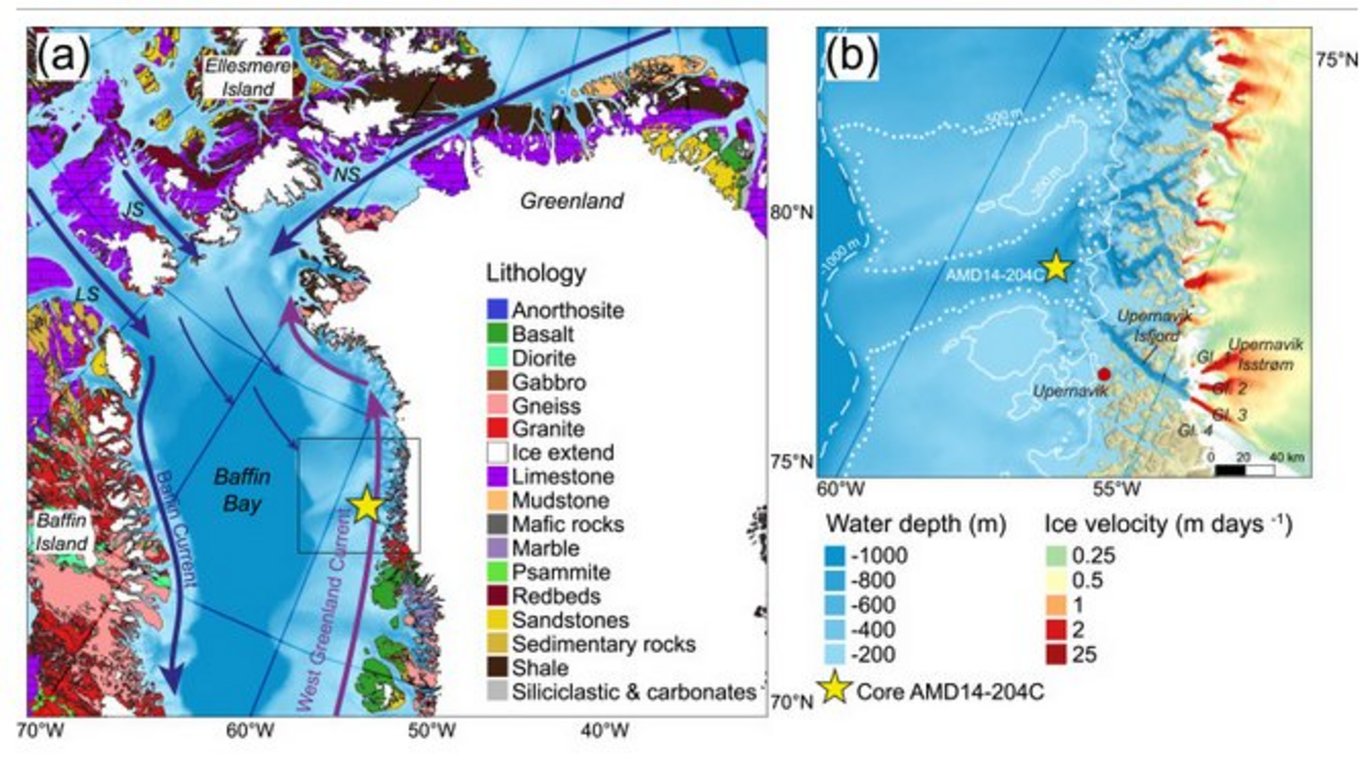Characterization of organic matter in marine sediments to estimate age offset of bulk radiocarbon dating
New publication by Katrine Elnegaard Hansen, Jacques Giraudeau, Audrey Limoges et al

Abstract:
Radiocarbon dating of Arctic marine sediment is often challenging due to the low availability of calcareous fossils. Consequently, bulk organic matter dating has at times been used to establish sediment core chronologies. Yet, radiocarbon dates based on bulk organic matter often appear to deviate vastly from dates based on fossils, mainly caused by input of allochthounous carbon, including terrigenous organic matter. In this study, we aim to examine the link between the composition of the bulk organic matter and the age offsets between the bulk radiocarbon dates and those obtained from calcareous foraminiferal tests. All samples are taken from the marine sediment core AMD14-204C from offshore Upernavik (eastern Baffin Bay). The radiocarbon dates for bulk organic matter are on average ∼3000 years older than the radiocarbon dates based on foraminifera, but with changing age offsets throughout the record. To investigate the cause of this age offset and its variations over time, we applied core scanning, X-ray Fluorescence analysis, stable isotopes, organic pyrolysis and microscopic organic petrology to examine the distribution and characterization of the organic matter. The results show that the older organic matter includes clastic input of reworked sedimentary rocks potentially originating from West Greenland and/or the Canadian Arctic Archipelago. Changes in the input of contemporary marine algal produced organic matter versus both terrigenous input and reworked ancient organic matter appear to control the age offsets between the bulk and foraminifera dates. A low Hydrogen Index and low δ13Corg values together with a high Oxygen Index, indicative of high influence of terrigenous organic matter, seem to correspond to samples with the largest age offsets; 1000–2000 years greater than in other samples. To examine the cause of the variations in the age offsets, a new quantification of the autochthonous organic matter as a fraction of the TOC was calculated. This shows that samples with the largest age offsets contained the lowest fraction (as low as ∼12%) of autochthonous organic matter in the TOC.
